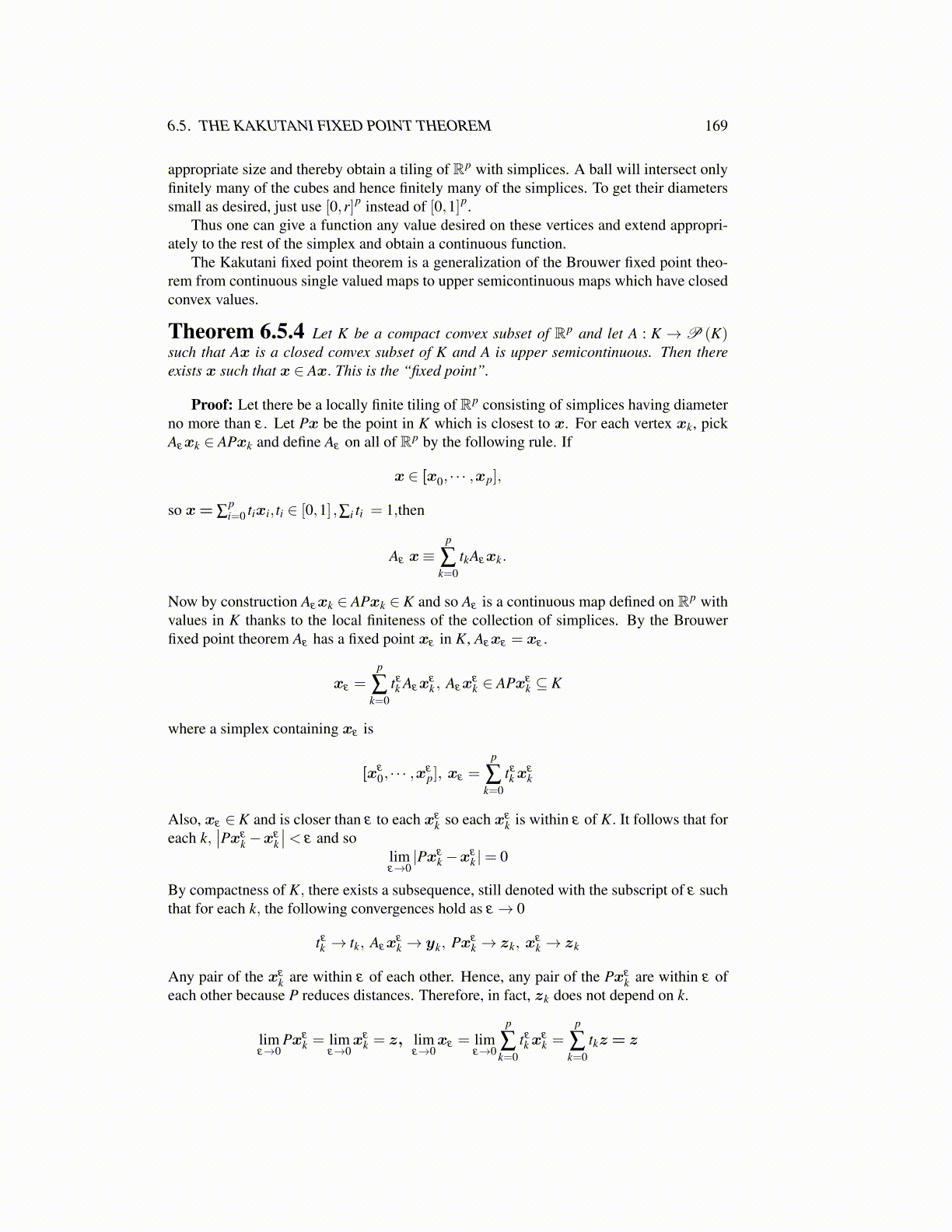
6.5. THE KAKUTANI FIXED POINT THEOREM 169
appropriate size and thereby obtain a tiling of Rp with simplices. A ball will intersect onlyfinitely many of the cubes and hence finitely many of the simplices. To get their diameterssmall as desired, just use [0,r]p instead of [0,1]p.
Thus one can give a function any value desired on these vertices and extend appropri-ately to the rest of the simplex and obtain a continuous function.
The Kakutani fixed point theorem is a generalization of the Brouwer fixed point theo-rem from continuous single valued maps to upper semicontinuous maps which have closedconvex values.
Theorem 6.5.4 Let K be a compact convex subset of Rp and let A : K →P (K)such that Ax is a closed convex subset of K and A is upper semicontinuous. Then thereexists x such that x ∈ Ax. This is the “fixed point”.
Proof: Let there be a locally finite tiling of Rp consisting of simplices having diameterno more than ε . Let Px be the point in K which is closest to x. For each vertex xk, pickAεxk ∈ APxk and define Aε on all of Rp by the following rule. If
x ∈ [x0, · · · ,xp],
so x= ∑pi=0 tixi, ti ∈ [0,1] ,∑i ti = 1,then
Aε x≡p
∑k=0
tkAεxk.
Now by construction Aεxk ∈ APxk ∈ K and so Aε is a continuous map defined on Rp withvalues in K thanks to the local finiteness of the collection of simplices. By the Brouwerfixed point theorem Aε has a fixed point xε in K, Aεxε = xε .
xε =p
∑k=0
tεk Aεx
εk , Aεx
εk ∈ APxε
k ⊆ K
where a simplex containing xε is
[xε
0, · · · ,xεp], xε =
p
∑k=0
tεkx
εk
Also, xε ∈ K and is closer than ε to each xεk so each xε
k is within ε of K. It follows that foreach k,
∣∣Pxεk −xε
k
∣∣< ε and solimε→0|Pxε
k −xεk |= 0
By compactness of K, there exists a subsequence, still denoted with the subscript of ε suchthat for each k, the following convergences hold as ε → 0
tεk → tk, Aεx
εk → yk, Pxε
k → zk, xεk → zk
Any pair of the xεk are within ε of each other. Hence, any pair of the Pxε
k are within ε ofeach other because P reduces distances. Therefore, in fact, zk does not depend on k.
limε→0
Pxεk = lim
ε→0xε
k = z, limε→0
xε = limε→0
p
∑k=0
tεkx
εk =
p
∑k=0
tkz= z